
Dairy products play a major role in baking, from butter in cookies to milk and cream in cakes and pastries. It's often possible to substitute one dairy product for another, either as an emergency replacement or because you want to achieve a different flavor or lower calories. For example, milk and heavy cream behave differently in baked goods because of their drastically different levels of fat.
About Milk and Cream
Whole milk varies in its fat content, but commercial milk averages approximately 4 percent fat. If it's left to rest, the fatty cream will slowly rise to the top where it can be separated. Heavy whipping cream normally has 36 to 38 percent fat, making it much richer. Although 1 cup of cream will moisten the same quantity of dry ingredients as 1 cup of milk, its high fat content means the batter will bake differently. To substitute milk for cream or cream for milk, you have to adjust for that difference.
Direct Substitutions
If your recipe calls for milk, using heavy cream will make it substantially richer. A cup of heavy cream is roughly one-third milk fat, so you might need to reduce the butter or shortening in your recipe to compensate. If you're out of cream and using milk as a substitute, you can make up the difference with unsalted butter. Use 2 parts milk to 1 part melted butter, stirred together and added with the remaining wet ingredients. This only works as a baking ingredient, unfortunately. The combination won't whip like heavy cream.
Creative Substitutions
If you're substituting milk for cream as a way to bring down the calorie count in your baking, using butter as your substitute isn't the best option. Instead, use an unsaturated oil in place of the melted butter. You can also use evaporated milk as a straight replacement for cream. It's got a slightly "cooked" flavor that can be detected in some recipes, but lends a definite dairy flavor to the end result. You can get a similar result by adding instant skim milk powder to the whole milk.
Adjustments
The quick substitutions will work in most cases, but if you want to fine-tune a recipe for long-term use, you can make some other adjustments. If you replace milk with cream, you're losing the milk's extra proteins, which help add structure and lightness to the finished product. You can replace those by adding some extra egg white, or instant skim milk powder. If the cream makes your recipe too dense and oily, add an egg yolk. It will help emulsify the extra fat in your batter. If you're using milk in place of cream and miss the rich flavor, add 1 or 2 tablespoons of buttermilk along with the whole milk.
Related Articles

How to Substitute Cream for Buttermilk
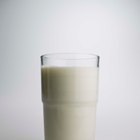
How to Cook With Lactaid
Cream vs. Creamer

Can I Use Milk Instead of Heavy Cream ...
Substitute for Light Cream in Cooking
The Difference Between ...
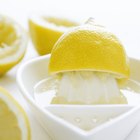
How Do I Curdle Soy Milk With Lemon ...
What Do Bakeries Use in Their Whipped ...
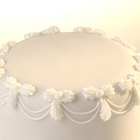
How to Make a White Decorator Icing

Calories in a Tablespoon of Cream Cheese

A Heavy Cream Substitute for Creme ...
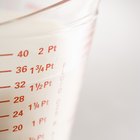
How to Use Evaporated Milk in Place of ...

What Can Be Used to Substitute for ...

Substitute for Heavy Whipping Cream in ...

Can You Make Ice Cream with Lactose ...
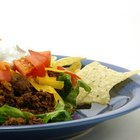
What Can I Use in Place of Sour Cream?
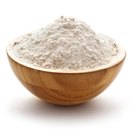
Can Jiffy Baking Mix Be Substituted As ...

Heavy Whipping Cream Vs. Half & Half
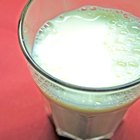
How to Make a Cinnamon Milk Face Mask
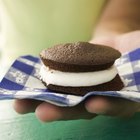
Differences Between Double Cream and ...
References
- On Food and Cooking: The Science and Lore of the Kitchen; Harold McGee
- The Cook's Thesaurus: Milk and Cream
- Joy of Baking: Baking Ingredient Substitution Table
Writer Bio
Fred Decker is a trained chef and certified food-safety trainer. Decker wrote for the Saint John, New Brunswick Telegraph-Journal, and has been published in Canada's Hospitality and Foodservice magazine. He's held positions selling computers, insurance and mutual funds, and was educated at Memorial University of Newfoundland and the Northern Alberta Institute of Technology.
Photo Credits
Jupiterimages/Goodshoot/Getty Images